Enrico De Santis
An Online Hierarchical Energy Management System for Energy Communities, Complying with the Current Technical Legislation Framework
Jan 22, 2024Abstract:Efforts in the fight against Climate Change are increasingly oriented towards new energy efficiency strategies in Smart Grids (SGs). In 2018, with proper legislation, the European Union (EU) defined the Renewable Energy Community (REC) as a local electrical grid whose participants share their self-produced renewable energy, aiming at reducing bill costs by taking advantage of proper incentives. That action aspires to accelerate the spread of local renewable energy exploitation, whose costs could not be within everyone's reach. Since a REC is technically an SG, the strategies above can be applied, and specifically, practical Energy Management Systems (EMSs) are required. Therefore, in this work, an online Hierarchical EMS (HEMS) is synthesized for REC cost minimization to evaluate its superiority over a local self-consumption approach. EU technical indications (as inherited from Italy) are diligently followed, aiming for results that are as realistic as possible. Power flows between REC nodes, or Microgrids (MGs) are optimized by taking Energy Storage Systems (ESSs) and PV plant costs, energy purchase costs, and REC incentives. A hybrid Fuzzy Inference System - Genetic Algorithm (FIS-GA) model is implemented with the GA encoding the FIS parameters. Power generation and consumption, which are the overall system input, are predicted by a LSTM trained on historical data. The proposed hierarchical model achieves good precision in short computation times and outperforms the self-consumption approach, leading to about 20% savings compared to the latter. In addition, the Explainable AI (XAI), which characterizes the model through the FIS, makes results more reliable thanks to an excellent human interpretation level. To finish, the HEMS is parametrized so that it is straightforward to switch to another Country's technical legislation framework.
A Hierarchical Genetic Optimization of a Fuzzy Logic System for Flow Control in Micro Grids
Mar 01, 2017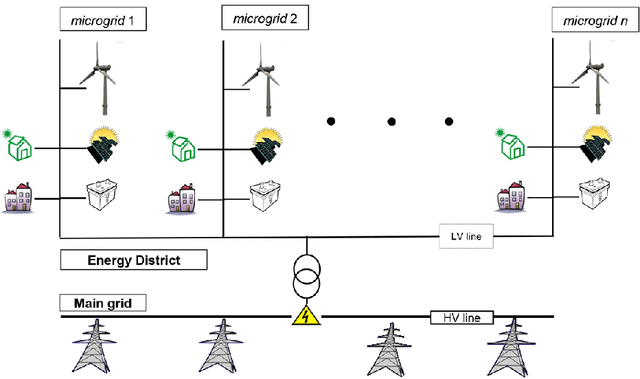
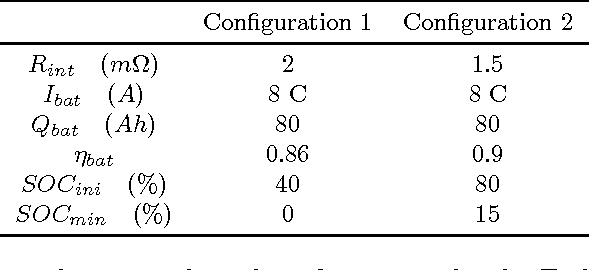


Abstract:Bio-inspired algorithms like Genetic Algorithms and Fuzzy Inference Systems (FIS) are nowadays widely adopted as hybrid techniques in commercial and industrial environment. In this paper we present an interesting application of the fuzzy-GA paradigm to Smart Grids. The main aim consists in performing decision making for power flow management tasks in the proposed microgrid model equipped by renewable sources and an energy storage system, taking into account the economical profit in energy trading with the main-grid. In particular, this study focuses on the application of a Hierarchical Genetic Algorithm (HGA) for tuning the Rule Base (RB) of a Fuzzy Inference System (FIS), trying to discover a minimal fuzzy rules set in a Fuzzy Logic Controller (FLC) adopted to perform decision making in the microgrid. The HGA rationale focuses on a particular encoding scheme, based on control genes and parametric genes applied to the optimization of the FIS parameters, allowing to perform a reduction in the structural complexity of the RB. This approach will be referred in the following as fuzzy-HGA. Results are compared with a simpler approach based on a classic fuzzy-GA scheme, where both FIS parameters and rule weights are tuned, while the number of fuzzy rules is fixed in advance. Experiments shows how the fuzzy-HGA approach adopted for the synthesis of the proposed controller outperforms the classic fuzzy-GA scheme, increasing the accounting profit by 67\% in the considered energy trading problem yielding at the same time a simpler RB.
Position paper: a general framework for applying machine learning techniques in operating room
Nov 29, 2015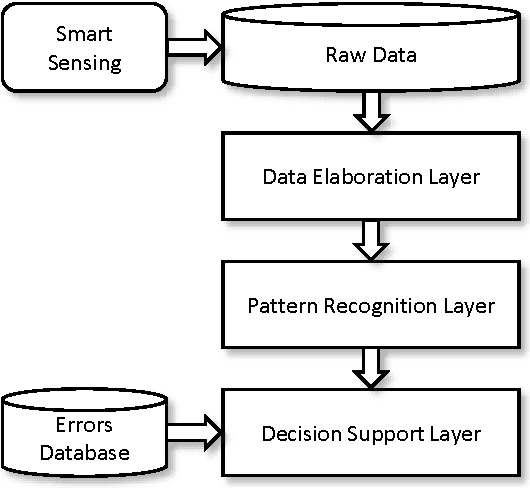
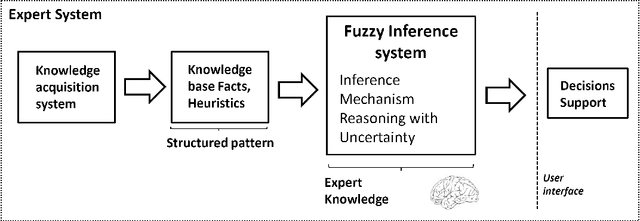
Abstract:In this position paper we describe a general framework for applying machine learning and pattern recognition techniques in healthcare. In particular, we are interested in providing an automated tool for monitoring and incrementing the level of awareness in the operating room and for identifying human errors which occur during the laparoscopy surgical operation. The framework that we present is divided in three different layers: each layer implements algorithms which have an increasing level of complexity and which perform functionality with an higher degree of abstraction. In the first layer, raw data collected from sensors in the operating room during surgical operation, they are pre-processed and aggregated. The results of this initial phase are transferred to a second layer, which implements pattern recognition techniques and extract relevant features from the data. Finally, in the last layer, expert systems are employed to take high level decisions, which represent the final output of the system.
Modeling and Recognition of Smart Grid Faults by a Combined Approach of Dissimilarity Learning and One-Class Classification
Dec 17, 2014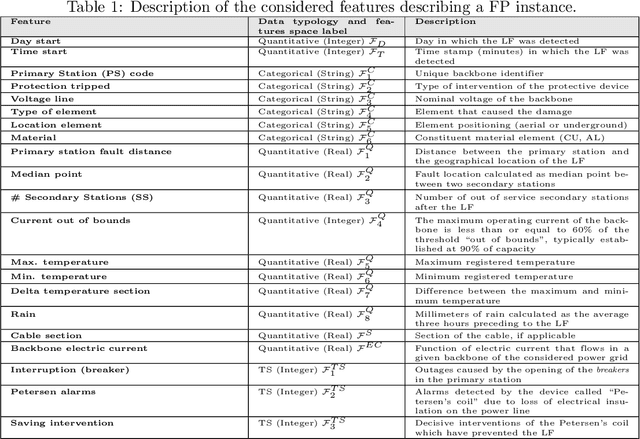

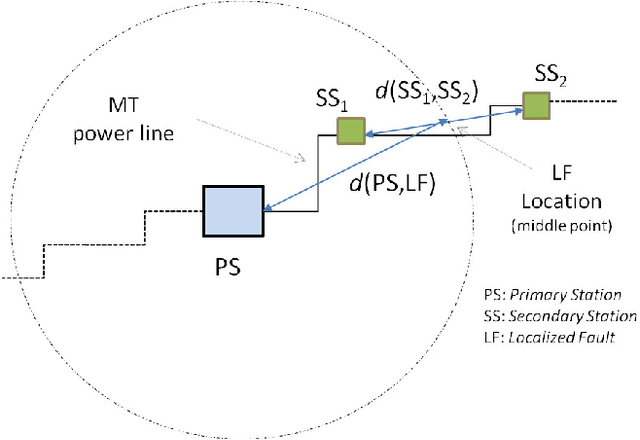

Abstract:Detecting faults in electrical power grids is of paramount importance, either from the electricity operator and consumer viewpoints. Modern electric power grids (smart grids) are equipped with smart sensors that allow to gather real-time information regarding the physical status of all the component elements belonging to the whole infrastructure (e.g., cables and related insulation, transformers, breakers and so on). In real-world smart grid systems, usually, additional information that are related to the operational status of the grid itself are collected such as meteorological information. Designing a suitable recognition (discrimination) model of faults in a real-world smart grid system is hence a challenging task. This follows from the heterogeneity of the information that actually determine a typical fault condition. The second point is that, for synthesizing a recognition model, in practice only the conditions of observed faults are usually meaningful. Therefore, a suitable recognition model should be synthesized by making use of the observed fault conditions only. In this paper, we deal with the problem of modeling and recognizing faults in a real-world smart grid system, which supplies the entire city of Rome, Italy. Recognition of faults is addressed by following a combined approach of multiple dissimilarity measures customization and one-class classification techniques. We provide here an in-depth study related to the available data and to the models synthesized by the proposed one-class classifier. We offer also a comprehensive analysis of the fault recognition results by exploiting a fuzzy set based reliability decision rule.
 Add to Chrome
Add to Chrome Add to Firefox
Add to Firefox Add to Edge
Add to Edge